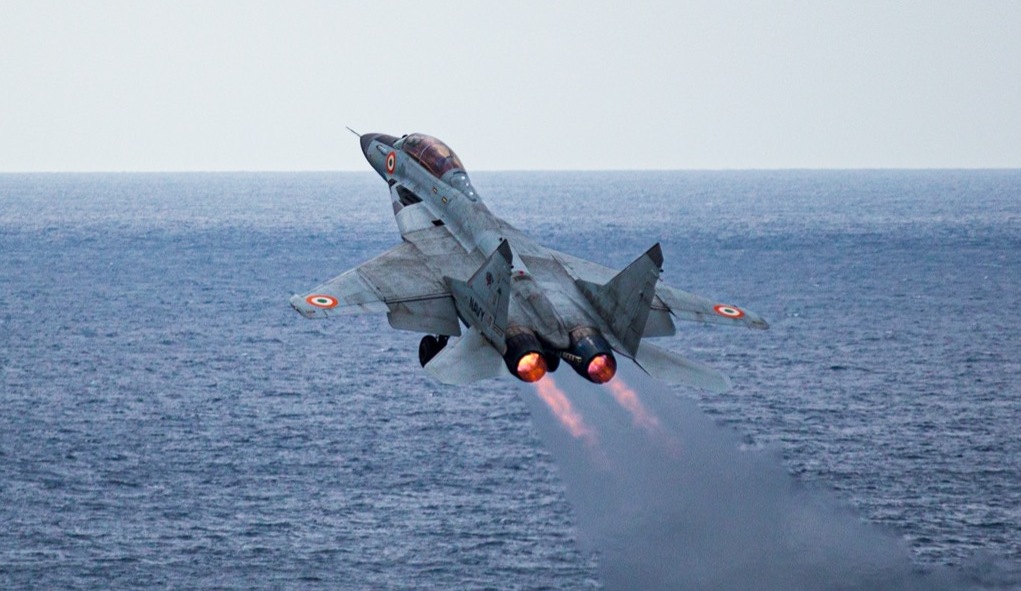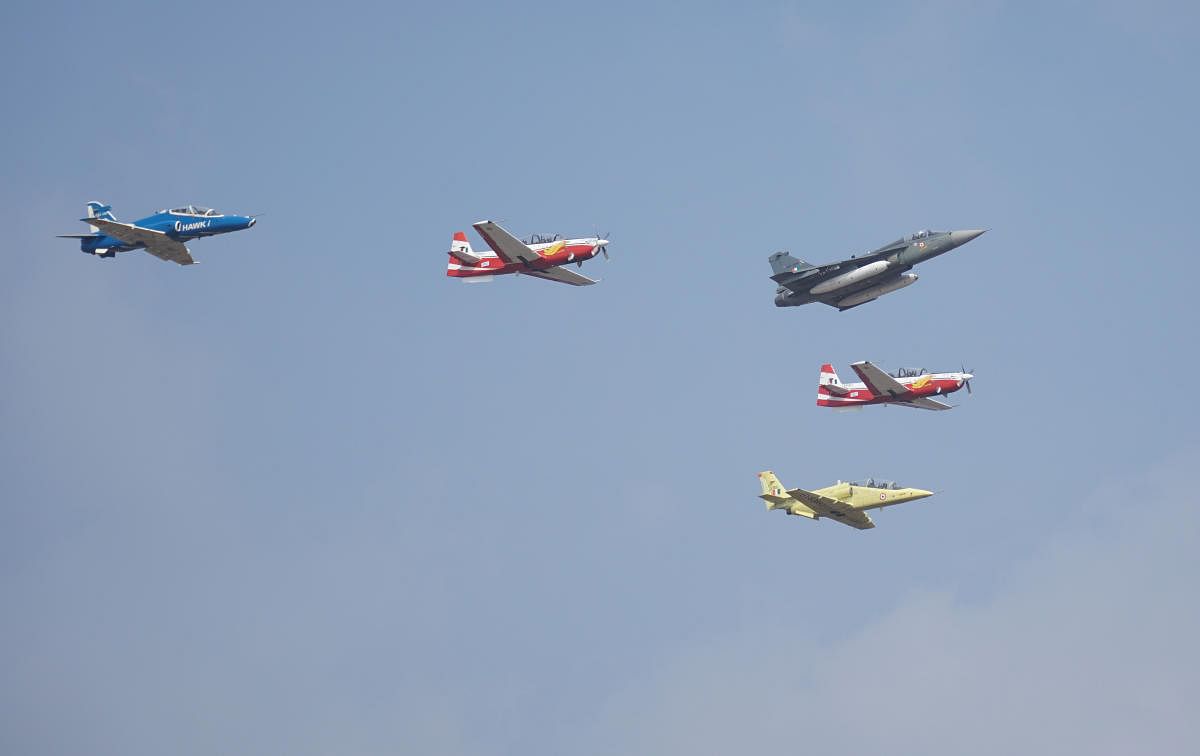SOURCE: AFI


In a significant development for India’s aviation training sector, Austria’s Diamond Aircraft Industries has entered into a joint venture with Tamil Nadu-based Sakthi Group to establish a final assembly line (FAL) for its DA40 NG trainer aircraft in Haryana’s Hisar. The agreement, signed with the Aero Club of India, involves the supply of 200 DA40 NG aircraft to various flying training organizations (FTOs) across India, with 150 of these slated for local assembly.
While this move promises to bolster India’s pilot training infrastructure, it raises serious concerns for the future of the domestically developed Hansa-NG trainer aircraft by the National Aerospace Laboratories (NAL), which has struggled to gain traction due to poor marketing, past performance issues, and now, intensified competition.
Continue readingSOURCE: AFI


In a stark reminder of the growing menace of cybercrime, Hindustan Aeronautics Limited (HAL), one of India’s premier aerospace and defense companies, has been duped of $63,000 (approximately Rs 55 lakh) in an online scam. The incident, which unfolded during a procurement deal with a US-based company, has prompted HAL to lodge a police complaint, and a case has been registered under the Information Technology (IT) Act.
The scam came to light after HAL’s Kanpur division initiated a transaction to purchase three fighter aircraft parts from PS Engineering Incorporated, a US-based firm, in May 2024. What began as a legitimate business exchange took a sinister turn when a fraudulent email ID infiltrated the communication chain, leading to the siphoning of funds into a fake account.
Continue readingSOURCE: AFI


Bharti Airtel, one of India’s leading telecommunications providers, announced a landmark agreement with SpaceX to bring Starlink’s high-speed satellite internet services to India. This partnership aims to bridge the digital divide by delivering broadband connectivity to even the most remote corners of the country, marking a significant milestone in India’s telecom landscape. However, the move has sparked concerns among defence analysts, who warn that the technology could be exploited by non-state actors, terrorists, and insurgents to wage war against the nation, potentially destabilizing India’s security apparatus.
The collaboration between Airtel and SpaceX is poised to revolutionize internet access in India, a country where vast rural and remote regions remain underserved by traditional telecom infrastructure. Starlink, operated by SpaceX, leverages a constellation of thousands of low-earth orbit (LEO) satellites to provide high-speed internet with low latency, capable of supporting streaming, online gaming, and video conferencing even in areas with little to no terrestrial connectivity. Airtel plans to explore offering Starlink equipment through its retail stores and providing services to businesses, communities, schools, and health centers, particularly in underserved areas.
Continue readingSOURCE: RAUNAK KUNDE / NEWS BEAT / IDRW.ORG


In a significant development aimed at addressing the Indian Air Force’s (IAF) critical shortage of fighter jets, the Multi-Role Fighter Aircraft (MRFA) Request for Proposal (RFP) is likely to be issued to select vendors by the end of 2025 or early 2026. This accelerated timeline follows the recommendations of a high-level committee formed to tackle the dwindling fighter squadron strength of the IAF. According to sources within the IAF, as reported by idrw.org, the committee has proposed a streamlined process that eliminates several rounds of clearance, replacing them with a single clearance mechanism to expedite the tendering process.
The IAF currently operates at a squadron strength of around 30, significantly below its sanctioned level of 42 squadrons, a gap that has raised concerns amid growing regional security challenges. The MRFA program, which seeks to procure 114 multi-role fighter jets, has been in the pipeline for years but has faced delays due to the complexities of the tendering process. Traditionally, the issuance of an RFP—a document often spanning thousands of pages—requires exhaustive examination of proposals submitted by multiple vendors, a process that can take years.
Continue readingSOURCE: RAUNAK KUNDE / NEWS BEAT / IDRW.ORG


The Indian Navy has decided to extend the operational life of its MiG-29K fleet from the previously planned retirement in 2035 to 2040, following delays in the Twin Engine Deck Based Fighter (TEDBF) program. This adjustment comes as the TEDBF project, intended to replace the ageing MiG-29Ks, awaits official clearance and faces extended development timelines, according to recent reports by idrw.org.
The TEDBF has been in development to address the Indian Navy’s need for a modern, indigenous carrier-based fighter jet. However, with the program still pending critical approvals, the Navy has had to rethink its strategy for maintaining air combat capabilities. A report from idrw.org highlights that the Navy has outlined nearly 14 major features it requires from the TEDBF, which are essential for its operational specifications and readiness.
Continue readingSOURCE: RAUNAK KUNDE / NEWS BEAT / IDRW.ORG


The Indian Navy is set to bolster its maritime aviation capabilities with the arrival of its first batch of Rafale Marine (Rafale M) fighter jets starting late 2029. This milestone follows the anticipated signing of a landmark deal for 26 Rafale M aircraft, comprising 22 single-seater Rafale M variants and four twin-seater Rafale B trainers, scheduled for April 2025 during a visit by the French Defence Minister to India.
The acquisition, valued at approximately €7 billion (around ?63,000 crore), marks a significant enhancement to the Navy’s carrier-based air power, ensuring operational superiority in the Indo-Pacific region.
Continue readingSOURCE: AFI


In a significant stride toward self-reliance in defence technology, the Indian Army’s Fleur-de-Lis Brigade, in collaboration with the Terminal Ballistics Research Laboratory (TBRL) in Chandigarh, has successfully developed and validated a combat-ready Kamikaze First-Person View (FPV) drone equipped with a customized warhead.
The Fleur-de-Lis Brigade, a specialized unit of the Indian Army, partnered with TBRL Chandigarh—a premier DRDO laboratory renowned for its work in ballistics and explosive technologies—to create this bespoke system. The customized warhead, tailored to mission-specific requirements, enhances the drone’s lethality while maintaining a compact and lightweight design. This collaboration has resulted in a combat-ready platform that promises to redefine India’s approach to drone warfare.
Continue readingSOURCE: AFI


In its latest edition, Air Forces Monthly (AFM), a renowned military aviation magazine published by Key Publishing Ltd in Stamford, Lincolnshire, United Kingdom, has shed light on a critical limitation of the Pakistan Air Force’s (PAF) JF-17 Block-III fighter jet.
The report highlights that the Active Electronically Scanned Array (AESA) radar equipping the Block-III variant falls short in range, rendering it incapable of independently operating advanced beyond-visual-range air-to-air missiles (BVRAAMs) like the PL-15 or the advanced variant of the PL-17.
Continue readingSOURCE: AFI


Dassault Aviation, the French aerospace giant, has reported a significant milestone in 2024, with its order book swelling to a record backlog of 299 aircraft, valued at €43.2 billion. The surge has been driven primarily by the continued global success of its flagship Rafale fighter jet, a versatile multirole aircraft that has solidified its reputation as a top-tier combat platform.
However, despite the impressive growth, persistent supply chain disruptions and production constraints pose challenges for the company, particularly as nations like India look to expand their Rafale fleets. This article delves into Dassault’s achievements, the hurdles it faces, and the implications for India’s defense procurement strategy.
Continue readingSOURCE: AFI


In a provocative move that has stirred tensions across the region, several Pakistan-backed defence analysts on the social media platform X have recently called for the establishment of multiple separatist “desks” targeting India. These calls come in the wake of allegations by Pakistan’s Inter-Services Intelligence (ISI) that India was behind a recent train hijack incident reportedly carried out by the Baloch Liberation Army (BLA).
The proposed desks include the Khalistan Desk, Kashmir Desk, Nagaland Desk, Manipur Desk, West Bengal Desk, Junagadh Desk, Tamil Tiger Desk (focused on Tamil land between South India and North Sri Lanka, particularly Jaffna), Naxal Desk, and Badoo Desk—each aimed at exploiting fault lines within India and its neighboring regions.
Continue readingSOURCE: IDRW.ORG


In a recent interview with idrw.org, a senior Indian Air Force (IAF) official revealed intriguing details about Russia’s proposal for the transfer of technology (ToT) for its Su-57 fifth-generation stealth fighter, highlighting India’s advancements in radar technology as a potential game-changer in any collaboration.
The official noted that India’s progress in Gallium Nitride (GaN)-based Active Electronically Scanned Array (AESA) radar systems surpasses Russia’s current capabilities, suggesting that Indian systems, such as the Uttam GaN AESA radar under development for the Advanced Medium Combat Aircraft (AMCA), could be integrated into the Su-57 to enhance its performance. While Russia has formally offered the Su-57 to India, the IAF has yet to make a final decision on the proposal, the official confirmed.
Continue readingSOURCE: IDRW.ORG


In his first press briefing as Chief of the Air Staff, Air Chief Marshal Amar Preet Singh unveiled an ambitious and forward-looking roadmap for the Indian Air Force (IAF), aiming to transform it into a fully indigenous force by 2047. Addressing the media ahead of the 92nd Air Force Day celebrations, Singh articulated a vision that aligns with India’s broader goal of self-reliance, or Atmanirbhar Bharat, in defence.
By the time India marks its centennial year of independence, the IAF aspires to have its entire inventory—aircraft, weapons systems, and supporting infrastructure—designed, developed, produced, and maintained domestically, heralding a new era of technological sovereignty and operational independence.
Continue readingSOURCE: AFI


In a striking display of India’s growing aerospace prowess, a new poster of the Tejas MkII, the next iteration of the indigenous Light Combat Aircraft (LCA), has been unveiled, highlighting its impressive armament and upgraded design features. The poster, recently showcased, depicts the Tejas MkII loaded with an array of cutting-edge munitions and systems, signaling its evolution into a versatile multi-role fighter capable of meeting the Indian Air Force’s (IAF) diverse operational demands.
The Tejas MkII, an advanced variant of the LCA Tejas, is being developed by Hindustan Aeronautics Limited (HAL) in collaboration with the Defence Research and Development Organisation (DRDO). With enhanced avionics, a more powerful engine, and an increased payload capacity, the MkII promises to bridge the gap between the current Tejas Mk1A and the futuristic Advanced Medium Combat Aircraft (AMCA). The new poster offers a glimpse into its formidable weaponry and structural upgrades, reinforcing its role as a cornerstone of India’s aerial defense strategy.
Continue readingSOURCE: AFI


In a recent interview with ABN News, Abdul Basit, former Pakistan Ambassador to India, has stirred controversy by advocating for the rejection of the mercy petition of Kulbhushan Jadhav, an alleged Indian spy currently in Pakistani custody. Jadhav, whose death sentence has been stayed pending further proceedings, remains a contentious figure in India-Pakistan relations.
Basit’s remarks come amid heightened tensions following India’s denial of any involvement in the recent Jaffar Express train incident, which some Pakistani narratives have sought to link with Indian interference. Additionally, Basit expressed regret over Pakistan’s decision to engage with the International Court of Justice (ICJ) in response to India’s legal challenge regarding Jadhav’s case, arguing that it was a misstep in handling the matter.
Continue readingSOURCE: AFI


A recently surfaced video has provided a glimpse into the ongoing advancements in India’s indigenous defense technology, showcasing the successful safe ejection trial of the Man-Portable Anti-Tank Guided Missile (MPATGM) from both hardpoints of the Aeronautical Development Establishment (ADE) Archer Short Range Unmanned Aerial Vehicle-Weaponised (SRUAV-W). This milestone marks a significant step forward in the development of the Archer SRUAV-W, a tactical unmanned aerial vehicle designed to enhance India’s battlefield capabilities through precision strikes and intelligence, surveillance, target acquisition, and reconnaissance (ISTAR) missions.
The Archer SRUAV-W, developed by ADE under the Defence Research and Development Organisation (DRDO), is an advanced derivative of the Rustom-1 tactical UAV. It has been extensively modified to serve as a weaponized platform capable of carrying out armed missions. The Archer is designed to operate at altitudes of up to 22,000 feet with an endurance of 12 hours, making it a versatile asset for military operations. Equipped with electro-optical and infrared (EO/IR) payloads, the UAV can gather real-time, high-quality imagery, providing critical situational awareness on the battlefield.
Continue reading